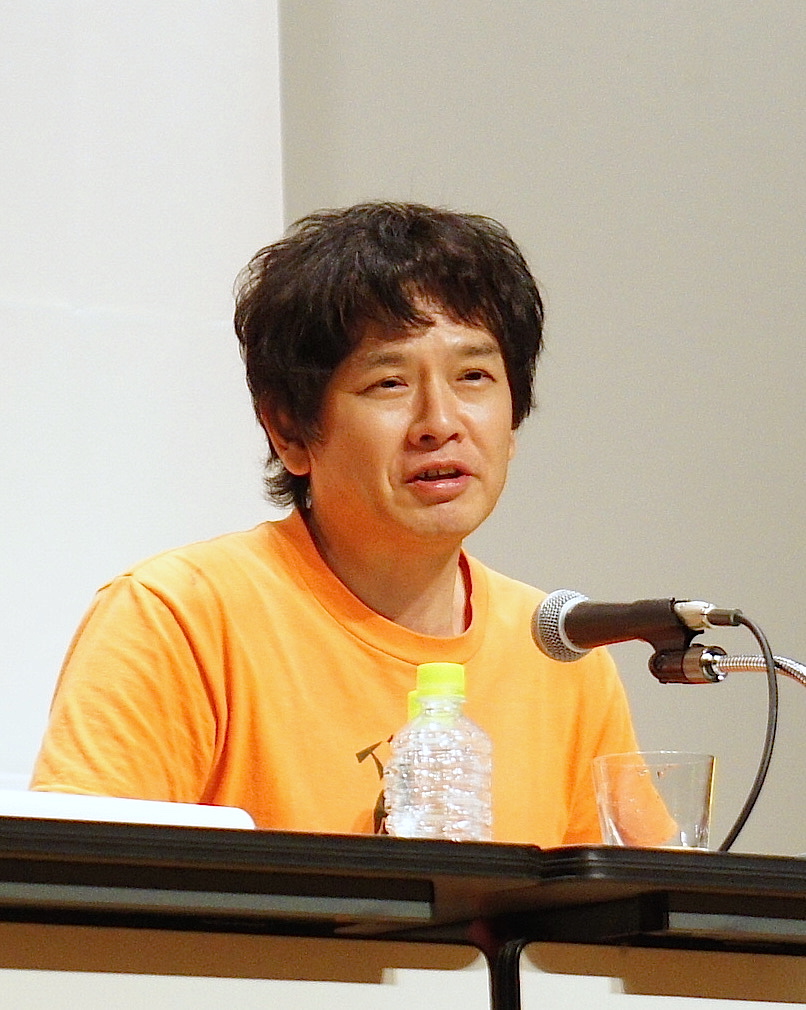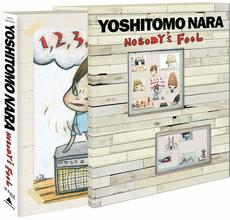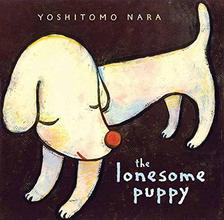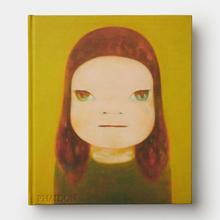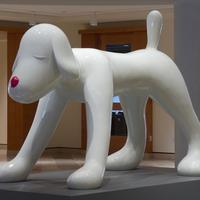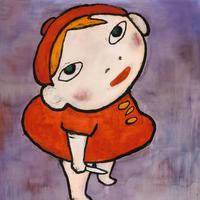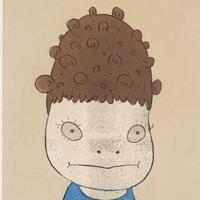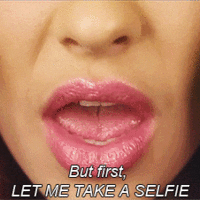More about Yoshitomo Nara
- All
- Info
- Shop
Works by Yoshitomo Nara

Contributor
Like a sad Mr. Rogers.
Yoshitomo Nara is member of the Superflat group with Takashi Murakami, and is a punk-rock Hayao Miyazaki of the fine art world. People associate his popular appeal with manga but he (like Hayao) hates that, “The fact is I have never once said I have been influenced by Japanese manga.” His young heroines are cute and little, but also emotionally complex and maybe dangerous and the whole world loves them. He was born in the middle of Japan’s rapid modernization after WWII, so he’s hyper anti-war, anti-nuclear, and pro-children and very against fixed meanings and binaries. He sees his characters and neutrally gendered and says he was raised “not to draw a line on things.”
In his younger days Nara was a full free-wheeler. He was a self-described “rocker” in a punk band, he traveled to the Chinese countryside (a place with strong anti-Japanese sentiments) and communicated by drawing little pictures, and bopped around Germany being super alone until 2000. His wild-and-free-ness helped him break down all kinds of barriers—Korea overlooked their traditional competition with Japan to give him an art award and Western collectors go crazy for his work. Even his art’s genre is a blend, both kimo and kawaii, disgusting-cute. The ‘disgusting’ might seem a little heavy-handed but the emotional ambiguity on his characters’ faces has a particular darkness in Japan where homicidal children appear every now and then— a “Boy A” killed two preteens in 1997, and a Nagasaki teen bludgeoned her classmate to death then beheaded her with a hacksaw in 2014. A critic for the New York Times picked up on the malice, suggesting Nara’s kids’ motto might be “don’t throw a tantrum, get even.” The same critic called his work a cross between “that arch, scathing infant in “Family Guy” and an Yves Klein.
The 2011 earthquake and Fukushima nuclear disaster (which is right near where he was born) sobered Nara’s art a little bit. His characters don’t need to suggest homicide because the world is homicide. Before 2011 he said he’d create out of happiness, or sometimes sadness, just being in the present moment, but after the disaster he “started to focus on how we can overcome sadness.” This shouldn’t suggest his work is going to go all Hello Kitty-kawaii though, Nara is a sadboi to his bones. He couldn’t work in Tokyo because he was having too much fun all the time, so he moved to the middle of nowhere saying “When I am sad and angry I take it as an opportunity to create something.” Like all the sad people he wants you to have a good time, even if that good time has titles like As Tears Go By. “Don’t think about it too hard,” he said, “this is just what comes out.” Tears, that’s what comes out.
Sources
- “10 things to know about Yoshitomo Nara.” Christie’s. November 20, 2017. Accessed April 30, 2018. https://www.christies.com/features/Yoshitomo-Nara-10-things-to-know-865…
- Ayers, Robert. “‘I Was Really Unthinking Before,’: Yoshitomo Nara on His Recent Work and Show at Pace Gallery in New York.” Art News, April 14, 2017. Accessed April 30, 2017. http://www.artnews.com/2017/04/14/i-was-really-unthinking-before-yoshit…-
- “Japanese artist Yoshitomo Nara: ‘I’m still trying to figure out the meaning of life.” South China Morning Post YouTube channel. Posted May 29, 2015. Video. 2 minutes 46 seconds. Accessed April 30, 2018. https://www.youtube.com/watch?v=VsBgG00LWvY
- McNeill, David. “Yoshitomo Nara: neo-pop artist who defies categorisation.” South China Morning Post. March 4, 2015. Accessed April 30, 2018. http://www.scmp.com/magazines/48hrs/article/1728517/yoshitomo-nara-neo-…
- Nara, Yoshitomo. @michinara3. Instagram post. August 30, 2015. Accessed April 30, 2018. https://www.instagram.com/p/7BAHNHRQDQ/?hl=en&taken-by=michinara3
- Nara, Yoshitomo. @michinara3. Instagram post. July 27, 2014. Accessed April 30, 2018. https://www.instagram.com/p/q9m6M4RQEm/?hl=en&taken-by=michinara3
- Nara, Yoshitomo. @michinara3. Instagram post. July 29, 2017. Accessed April 30, 2018. https://www.instagram.com/p/BXHlPIZFVXt/?hl=en&taken-by=michinara3
- Shaw, Catherine. “A conversation with Yoshitomo Nara.” Ocula. May 9, 2016. Accessed April 30, 2018. https://ocula.com/magazine/conversations/yoshitomo-nara/
- Smith, Roberta. “ART IN REVIEW; Yoshitomo Nara.” The New York Times. November 5, 1999. Accessed April 30, 2018. https://www.nytimes.com/1999/11/05/arts/art-in-review-yoshitomo-nara.ht…
- Wu, Qi. April 4, 2014. “The Influence of Modern Japanese Art: Kimo kawaii and Mono-ha.” Modern Japanese Art. Accessed April 30, 2018. https://wuqi77.blogspot.com/2013/04/modern-japanese-art_4.html
- “Yoshitomo Nara, Missing In Action: Catalogue Essay,” Phillips, Oct 14, 2014, accessed April 30, 2018. https://www.phillips.com/detail/YOSHITOMO-NARA/UK010615/9
- “Yoshitomo Nara, Right Hand In Back: Catalogue Note.” Sotheby’s. November 17, 2017. Accessed April 30, 2018. http://www.sothebys.com/en/auctions/ecatalogue/2017/contemporary-art-da…

Contributor
Yoshitomo Nara’s art is remnant of Stewie Griffin from Family Guy, Ponyo from the Miyazaki film, and Boo from Monsters Inc… but with knives, cigarettes, and torches.
Born in Hirosaki, Japan in 1959, Yoshitomo is the youngest of three boys to workaholic parents who often left little Nara to his own devices. Yoshitomo’s childhood “was lonely, and music and animals were a comfort.” He explained that “[he] could communicate better with animals, without words, than communicating verbally with humans.” Yoshitomo received his BFA and MFA at Aichi Prefectural University of Fine Arts and Music before moving to Germany in 1988. He studied at the Kunstakademie Düsseldorf until 1993, and returned to Japan to hang with the “superflat” group, which included artists like Takashi Murakami. The “superflat” style is basically exactly what it sounds like – two-dimensional and cartoonish. Yoshitomo’s work is a little edgier than the rest, however.
He depicts children that “are rendered in clear buoyant shapes, like toys. But their big beach-ball heads feature clamped, lozenge-shaped mouths and somewhat slanted green eyes that smolder resentfully. One has vampire teeth; others are identified as arsonists or witches.” They often wield tiny, fun-sized weapons that give off a Chucky vibe. Because he is rather shy in front of interviewers, Yoshitomo’s art and the meaning behind it remains a sort of mystery to us. He once explained that people can read whatever they would like into his art based on his/her own experiences and beliefs. This is cool of him, but also super frustrating for those seeking a definite answer.
There was a shift in Yoshitomo’s work in 2011 – one that was a direct result of the 2011 Japan Earthquake and Tsunami. The disaster struck the artist close to home…literally. His hometown is on the border of Fukushima, where the earthquake hit hardest. Yoshitomo knew many people who died or were severely affected by the disaster and for a while he couldn’t create anything. Only after he visited the site several times did he get his mojo back.
And now he is one of the most popular artists in the world. He has a cult following in Asia comparable to that of Star Trek and has been exhibited all over the world. There are Band-Aids, watches, T-shirts, leggings, pillow cases, dolls, notepads, stamps, piggy banks, tumblers, skateboard deck and more, all featuring his art. So if you ever need any creepy child merchandise, Yoshitomo Nara has you covered.
Sources
- "10 Things To Know About Yoshitomo Nara | Christie's." Christies.com. N.p., 2017. Web. 30 Apr. 2018.
- McNeill, David. "Yoshitomo Nara: Neo-Pop Artist Who Defies Categorisation." South China Morning Post. N.p., 2015. Web. 30 Apr. 2018.
- Smith, Roberta. "ART IN REVIEW; Yoshitomo Nara." Nytimes.com. N.p., 1999. Web. 1 May 2018.
- Smith, Roberta. "Cuddling With Little Girls, Dogs And Music." Nytimes.com. N.p., 2010. Web. 1 May 2018.
Featured Content
Here is what Wikipedia says about Yoshitomo Nara
Yoshitomo Nara (奈良 美智, Nara Yoshitomo, born 5 December 1959 in Hirosaki, Aomori Prefecture, Japan) is a Japanese artist. He lives and works in Nasushiobara, Tochigi Prefecture, though his artwork has been exhibited worldwide. Nara has had nearly 40 solo exhibitions since 1984. His art work has been housed at the MoMA and the Los Angeles County Museum of Art (LACMA). His most well-known and repeated subjects are "big-headed girls" with piercing eyes, who one Nara scholar describes as having "childlike expressions [that] resonate with adult emotions, [their] embodiment of kawaii (cuteness) carries a dark humor, and any explicit cultural references are intertwined with personal memories."
Check out the full Wikipedia article about Yoshitomo Nara

